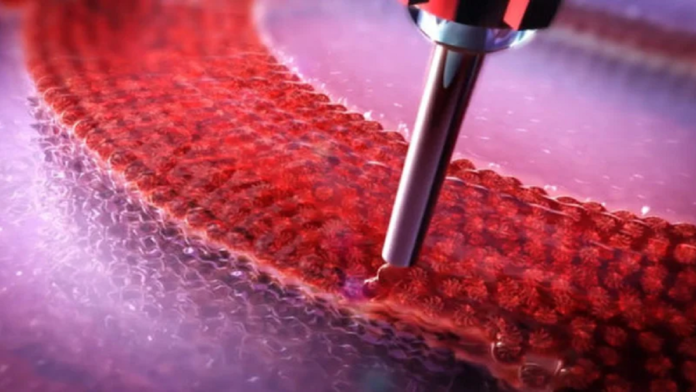3D bioprinting in healthcare
3D bioprinting: As per reports, an Australian researcher has invented a snake like soft robot designed to print living cells in 3D from the inside of patients’ bodies. This development may soon eliminate the need for invasive surgeries to transplant 3D printed tissues and treatments.
What are 3D bioprinters?
Similar to conventional 3D printers, 3D bioprinters build three-dimensional objects by layering ink. The only distinction is that they employ bioinks that contain living cells in them.
Similarly, researchers are using 3D bioprinters to produce ear implants for children who were born with birth abnormalities, stem cell patches to treat babies’ hearts, and cartilage for reconstructive rhinoplasty.
3D bioprinting makes it seamless to create tissues in precisely the shape and size required. Considering a patients’ own cells can be used in the ink, the risk of rejection is lowered.
However, there is still a need for invasive implantation surgeries, which bioprinting cannot yet replace.
“Current 3D bioprinting techniques need the creation of biomaterials outside the body, and implanting those into a human would often require big open-field surgical surgery, which increases the risk of infection,” said Thanh Nho Do, a biomedical engineer at UNSW Sydney who spoke to a news report.
How do 3D bioprinters function?
Aside from printing bioinks, the soft robot can function as an endoscope, electric scalpel, and water dispenser. Researchers have tested these functions in an artificial colon and a pig’s intestine and kidney.
Further, before considering human trials, scientists will have to conduct in vivo testing on animals. If everything goes as planned, they anticipate that the bot will be ready for clinical use in five to seven years.
Furthermore, once put into the colon, the robot may remove a difficult-to-reach tumour and then 3D bioprint material to promote healing on-site.
Moreover, if the robot passes development, clinicians may be able to use it to treat colorectal cancer, which is the second most common cause of cancer deaths, reported Freethink.


